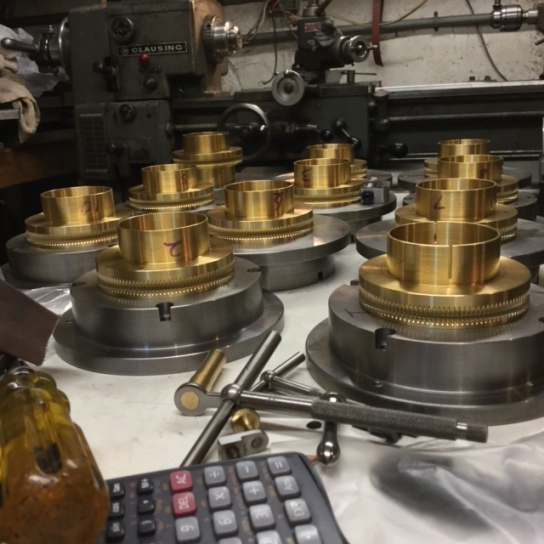The phasing on the ARH is done exclusively through a worm, which phases the rosette 3 degrees per revolution. The worm wheel has 120 notches. In order to create the worm the wheel is “gashed” with a thread mill and then the thread profile is set into the wheel with a hob.
Another worm wheel we make is from our slide rest. This time we used a 60 degree cutter that is 3/4″ in diameter, as the worm will be that size.
But… back to the ARH !
Once the worm wheels for the ARH have their teeth, they are engraved. The 120 division lines are done first, after which the numbers are set in. Rather than set up two machines this is also done in the pantograph engraving machine. The spindle is well suited for the job, as it runs up to 18,000 RPM’s.
We use a Gorton P 1-3 “copy mill” or pantograph engraver. It’s capable of ratios from 2:1 to 16:1 in two or three dimensions. It was the smallest of the 3D pantograph that Gorton made and takes up a foot print of about 4’x5′. The numbers are set into the table. The “w’s” were used only as spacers so the stylus didn’t run afoul of the clamps.
After the numbers and lines are engraved they are filled with black lacquer or enamel. The part is then cleaned while the lacquer is still wet, after which it is clear coated with Nikolas lacquer. This is a nitrocellulose lacquer designed specifically for musical instruments, which will be handled a lot. This acts as a seal against the environment, keeping it free of oxidation.
Finished!






























